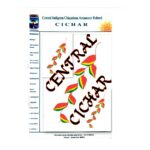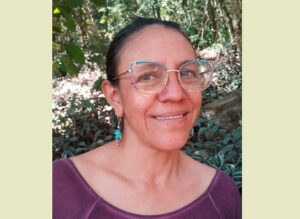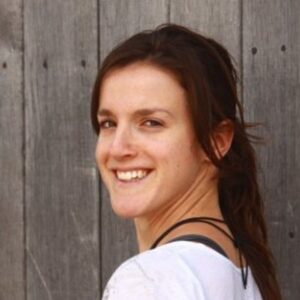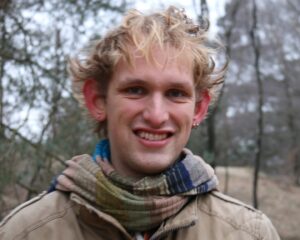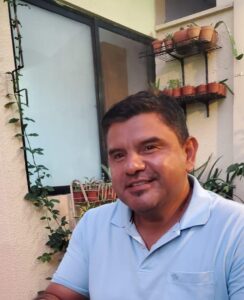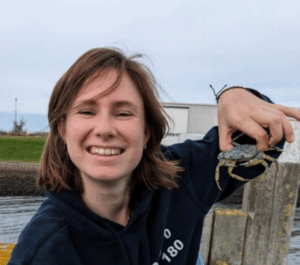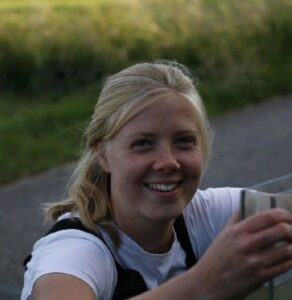Long term research project
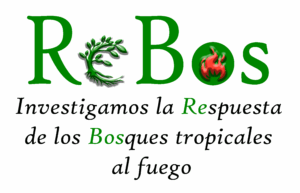
ReBos emerged from the need to generate scientific knowledge about the impacts of and recovery following the large wildfires that have occurred in recent years in the forests of the Chiquitania region of Bolivia. Although its area of action covers only part of the broader Chiquitano Forest region, it is one of the most important research and monitoring projects for this ecosystem, as its results and findings are based on the establishment and long-term monitoring of permanent plots since 2021.
In Bolivia, the project is led by researcher Geovana Carreño Rocabado and coordinated with departmental authorities through the Natural Resources Directorate (DIRENA) of the Government of Santa Cruz de la Sierra, the APM Tucabaca management team, and local indigenous community leaders, including Cacique Mayor Ms. Nardy Velasco and Cacique of the Naranjo community Ms. María Rosario Rodas.
Research questions
We seek to understand the impacts of wildfires on the vegetation of the Chiquitano Dry Forest and its capacity for regeneration and recovery. Our research operates across multiple scales — from individuals and species to communities and landscapes.
Our main research questions are:
How does the Chiquitano Dry Forest respond (in terms of survival and recovery) to different wildfire intensities and frequencies?
Which functional traits best explain tree responses — whether recovery or mortality — following fire events?
What mechanisms at the individual and community levels drive vegetation recovery, and how do these mechanisms help us understand the long-term impacts of wildfires?
Permanent plot design
A total of 15 permanent plots were established, each measuring 100 x 20 m. Each plot was divided into five 20 x 20 m subplots. Within these subplots, all trees, shrubs, and lianas with a diameter at breast height (DBH) greater than 10 cm were recorded and measured. In the center of each plot, individuals with DBH ≥ 5 cm were measured within a 4 m-wide strip (2 m on each side, represented in gray in the schematic), and individuals with DBH ≥ 1 cm were measured within a 2 m-wide strip (1 m on each side, represented in red in the schematic).
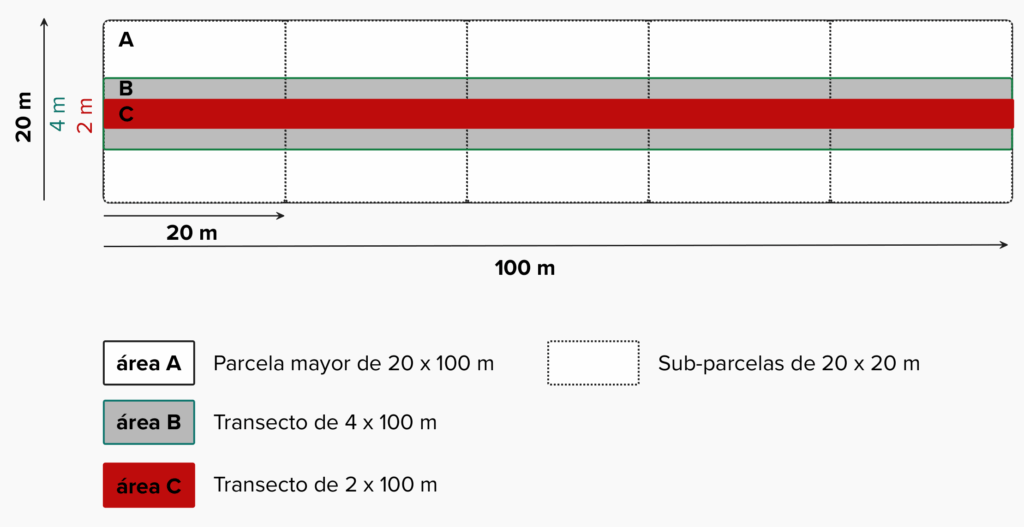
Study area
Most plots were established within the boundaries of the Tucabaca Municipal Protected Area, adjacent to the Naranjo community polygon (Aguas Calientes zone). Six of the 15 plots are located within the Naranjo community area. The plots were installed across two main vegetation types: Semi-deciduous humid forest of the Chiquitania and Beni regions. Sclerophyllous chaparral of the Chiquitania, representing a transition to Chaco vegetation on sandy soils (Abayoy).
Fieldwork Periods (Data Collection)
From 2021 to 2025, four field campaigns have been carried out, summarized as follows:
2021: Diagnostic and Plot Establishment
Using satellite imagery and field visits to burned areas, we conducted an initial assessment to identify potential sites for establishing permanent plots.
The main criteria for site selection were:
Location within a protected area to ensure long-term conservation of research plots.
Proximity to indigenous communities to promote local participation in long-term monitoring.
Availability of both unburned areas and areas with burn scars.
Based on these criteria, the study area was selected within the Tucabaca Protected Area and the Naranjo community polygon (Roboré Municipality). Under the coordination of Masha, who traveled from the Netherlands for this task, 15 permanent plots were established with the support of experienced field assistants specializing in research plots and tree identification.
2022: First Re-measurement
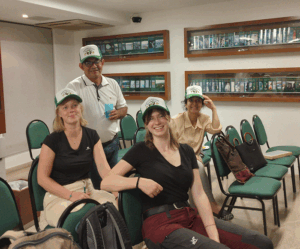
Between November and December 2022, Wageningen University master’s students Anne Kool and Nina van Boxem, together with field assistants Ricardo Méndez and Pablo Carreño, carried out the first re-measurement of the plots. In addition to vegetation data, soil samples and bark samples from selected tree species were also collected.
2024: Second Re-measurement
In November and December, Wageningen University master’s students Daniel Rikkers and Zeno Corazza conducted the second re-measurement of the permanent plots. Daniel collected data for his master’s thesis, while Zeno conducted an internship as part of his academic program.
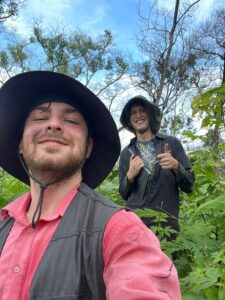
2025: Complementary Data: Functional Traits
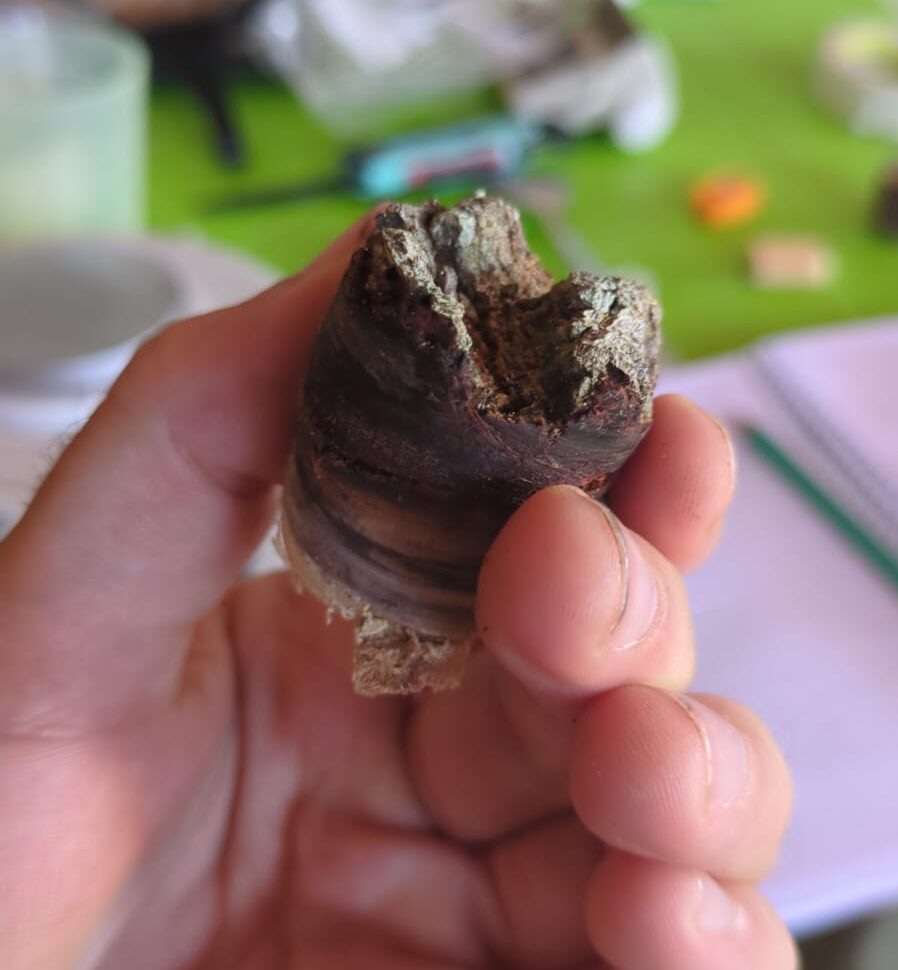
Muestra de madera de un tronco de un árbol (Foto. D. Pakut 2025)
As part of the FunFire project, PhD candidate David Pakut from Wageningen University, along with master’s student Stern van de Heide, visited the plots to collect data on functional traits of the most abundant tree species. These data are currently being analyzed to explore relationships between tree recovery, resilience, and fire response.
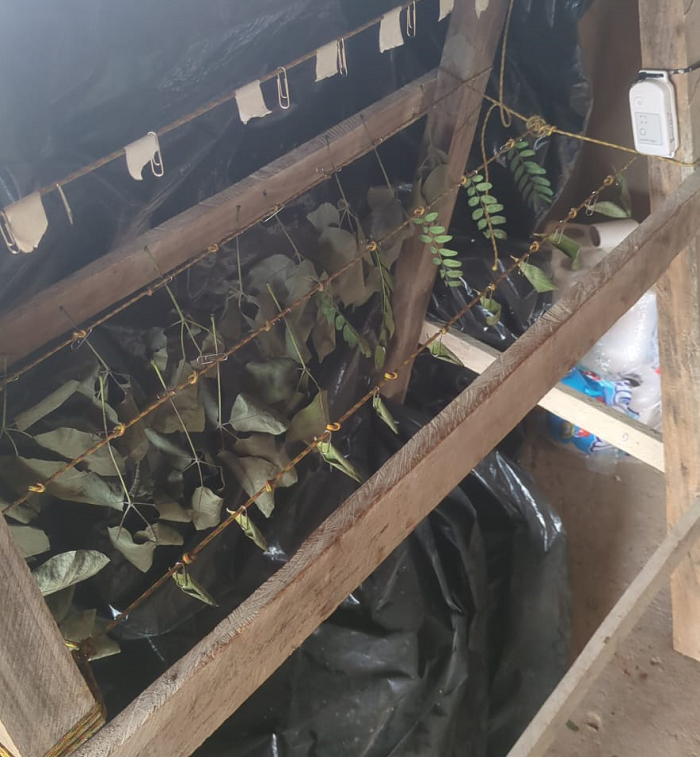
Improvisación de un secador de hojas para determinar la perdida de agua (Foto: D. Pacukt, 2025)
To assess leaf water loss, David and Stern constructed an improvised leaf dryer in the field. They selected the most abundant tree species in the plots and measured a series of functional traits from five individuals per species, collecting leaf, bark, stem, and root samples.
Principal results
Lista preliminar de las especies dominantes en las parcelas ReBos
Este reporte fue entregado a la Cacique Mayor de la Central Indígena Chiquitana Amanecer Roboré – CICHAR de la y la Cacique de la comunidad de Naranjo. Puedes bajarlo aqui.
Resumen del equipo y colecta de datos 2021-2025
Este informagrama te brinda un vista conjunta de las acctividades que ReBos realiza, el equipo que participa y los tiempos de acción.
Aqui se pondrá la metadata de la base de datos de las parcelas
La metadata te ayuda a conocer que tipo de datos tenermos colectados y evaluar como podemos colaborar en otras investigaciones
Aqui subiremos resumenes de las tesis realizadas
Por ahora tenemos cuatro tesis, Pronto subiremos sus resumenes
Team
Coordinador
Investigador
David Pacuk
Investigador
Candidato a doctorado Universidad de Wageningen (2024 - 2027)
Tesista
Asistente de campo
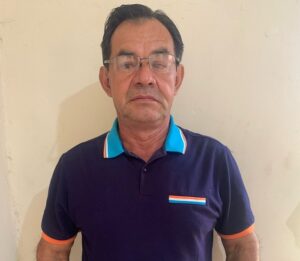
Ricardo Mendez
Asistente de campo
Experto en monitoreo de parcelas
Project implementers


Financial supporters
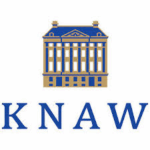

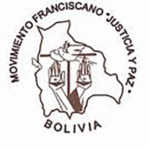
Local supporters

